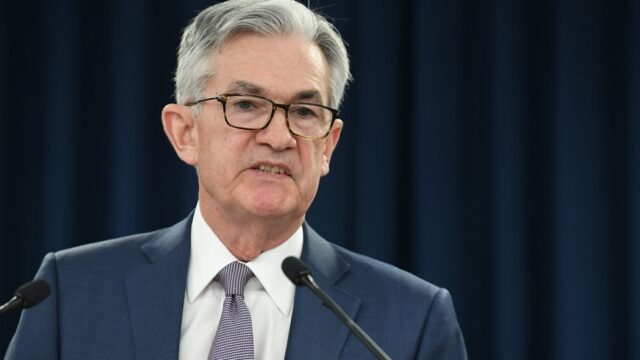WASHINGTON – On Wednesday, the Federal Reserve decided to keep its benchmark interest rate unchanged, maintaining its target range of 4.25%-4.5%, where it has stood since December. However, officials suggested that later this year, rate cuts might be on the horizon.
The Federal Open Market Committee (FOMC) was swayed by concerns over how tariffs might be hurting an already slowing economy. While the market had widely expected no immediate changes, the Fed’s updated projections indicated a likelihood of rate reductions in the future. Policymakers foresee a total decline of 0.5 percentage points by the end of 2025, likely executed in two quarter-point adjustments.
The announcement bolstered investor confidence, with the Dow Jones Industrial Average climbing more than 200 points. Despite this optimism, Fed Chair Jerome Powell underscored the central bank’s readiness to sustain elevated rates if economic conditions demand caution.
“If the economy remains robust and inflation does not move sustainably toward 2%, we are prepared to extend policy restraint,” Powell stated. “Conversely, if the labor market weakens or inflation eases faster than anticipated, we stand ready to adjust policy as required.”
Economic Uncertainty and Inflation Expectations
The Fed highlighted rising uncertainty about the economic outlook, emphasizing risks to employment and inflation targets.
Officials dialed back their economic growth predictions, projecting a 1.7% expansion in GDP this year—a 0.4 percentage point drop from their December forecast. Conversely, inflation expectations have been revised upward, with core prices now anticipated to rise at an annual rate of 2.8%, reflecting a 0.3 percentage point increase.
The central bank’s “dot plot,” which charts policymakers’ rate expectations, reflects a more cautious approach to future adjustments. Compared to December, a greater number of officials now foresee no rate changes in 2025. However, the long-term federal funds rate projection remains steady at around 3%.
Adjustments to Quantitative Tightening
Alongside pausing interest rate hikes, the Fed announced a reduction in its quantitative tightening (QT) measures, which aim to shrink its balance sheet. Going forward, only $5 billion in maturing Treasury securities will be allowed to roll off each month, a significant drop from the previous $25 billion monthly cap. Meanwhile, the $35 billion cap on mortgage-backed securities remains unchanged.
Notably, Fed Governor Christopher Waller dissented from this decision. While supporting stable interest rates, he argued for maintaining the QT program at its prior pace.
Market Reactions and Economic Headwinds
The Fed’s decision comes amid increasing economic volatility, partly fueled by President Donald Trump’s tariff policies. The administration has imposed levies on steel, aluminum, and other imports, with additional tariffs potentially rolling out in April.
The tariff measures have contributed to higher inflation expectations among consumers, reflected in recent surveys. While February retail spending grew slower than forecasted, consumer behaviors have remained resilient overall.
Despite stock market turbulence since the start of Trump’s second term, Bank of America CEO Brian Moynihan remains optimistic. He cited consistent consumer spending and predicted 2% GDP growth for the year.
However, the labor market has shown signs of strain. February saw nonfarm payrolls grow more slowly than expected, and a broader unemployment measure, which includes discouraged and underemployed workers, recorded its largest increase since October 2021.
Faced with mounting uncertainties, the Federal Reserve continues its delicate balancing act of managing inflation, supporting employment, and stabilizing growth in an evolving economic landscape.










